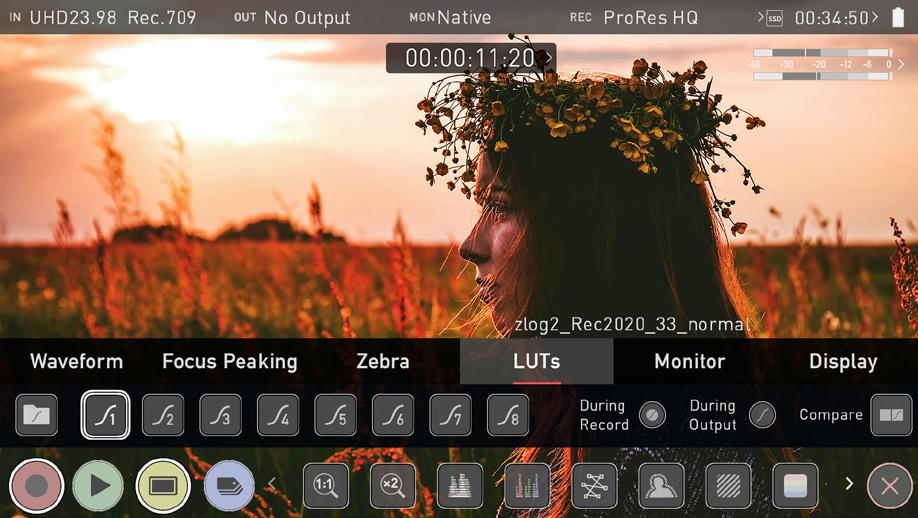LUTs (Look-Up Tables) have become an important tool for color correction and creative image design in the field of video editing. They offer a way to adjust colors and brightness quickly and precisely without changing the original material. In this post, you'll find out what LUTs are, what types there are and how to use them on set with the help of Atomos recorders.
1. What are LUTs?
LUTs, or Look-Up Tables, are basically a type of conversion table that defines how certain color and brightness values are adjusted to achieve a certain look. They are established as the standard format for color correction and creative looks in video editing because they are easy to apply to film material. LUTs are mainly divided into two main types:
1D-LUTs change individual parameters such as contrast and brightness. They are suitable for basic adjustments.
3D-LUTs offer more complex color changes by adjusting the RGB values of an image simultaneously to transform the entire image.
The use of LUTs is useful both during recording (on-set) and in post-production. They can immediately give the video material a professional look and are a simple tool for previewing color schemes directly on set.
2. Types of LUTs and their field of application
Conversion LUTs (e.g. Log to Rec.709): These LUTs correct the flat, low-contrast image of log recordings and adapt it to the requirements for the screen on which it is displayed.
Creative LUTs: These LUTs give your material a certain “look”, such as the “cinematic look”, which is popular for films, or retro color tones for a vintage look.
Calibration LUTs: Are used to calibrate monitors and projectors so that they comply with standardized color profiles such as Rec.709.
3. Why use LUTs?
LUTs save time and are an indispensable tool for creating a consistent look during color correction and color grading. Not only do they provide an efficient way to adjust colors, but they also enable consistent looks between different shots and cameras
Atomos recorders, such as the Ninja and Shogun models, allow LUTs to be applied directly on set, making it easier for camera crews to get an idea of the final look while the original footage remains unchanged.
4. Applying LUTs with Atomos recorders
The Atomos recorders support the application of LUTs during recording and offer a preview that simulates the final look. This helps filmmakers to adjust lighting and camera settings in real time.

Step-by-step instructions for using LUTs on Atomos devices:
- Preparation of the LUT file: Most Atomos devices support the .cube format. Load the .cube file onto an SD card or USB drive.
- Importing the LUT: Go to the LUT manager in the Atomos recorder menu and load the file from your storage medium.
- Apply and preview: The LUT only affects the display on the monitor, but not the original material, which enables flexible post-processing.
- Live adjustments: On some models (e.g. Ninja Ultra), the strength of the LUT can be adjusted so that directors and camera crews can see the fine adjustment live.
5. Creative potential of LUTs
The use of creative LUTs allows different moods to be created:
- Cinematic look: Adds depth to dark tones and increases contrast.
- Vintage look: Softens colors and reduces contrast for a nostalgic atmosphere.
- High-contrast look: Particularly suitable for dramatic scenes.
By using LUTs in combination with Atomos recorders, you can simulate creative looks on location and have the flexibility to adjust the final result in post-production.
Conclusion
LUTs are an essential part of modern film production and facilitate color correction and color grading. The ability to apply LUTs with Atomos recorders such as the Ninja or Shogun enables an accurate visual preview of the final look without compromising the original footage. By using conversion and creative LUTs, the material can be adjusted directly during production, making work much easier for camera crews and directors.
Produktinformationen zu Atomos Shinobi II, Ninja, Ninja Ultra, Shogun, Shogun Ultra, Sumo 19SE
What are LUTs and how do I use them?